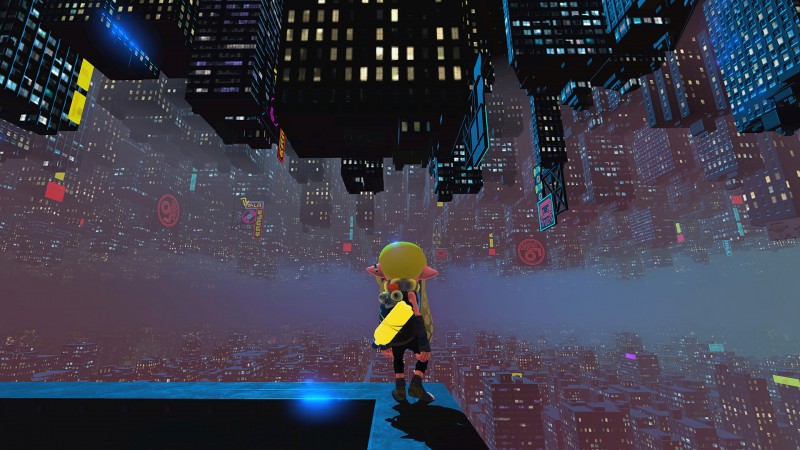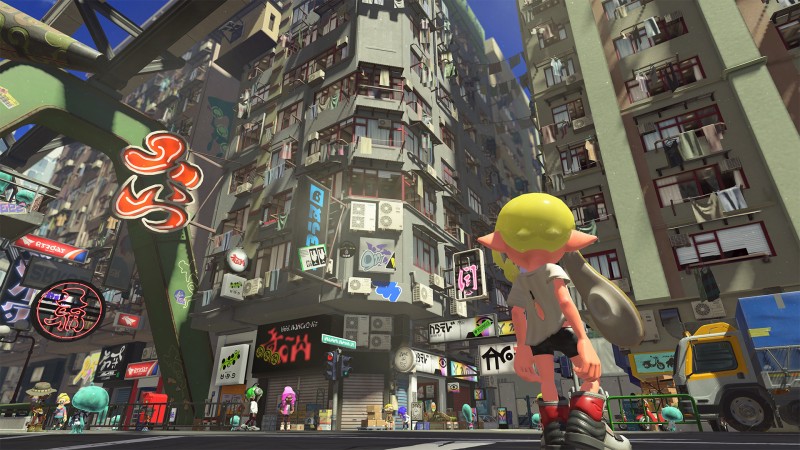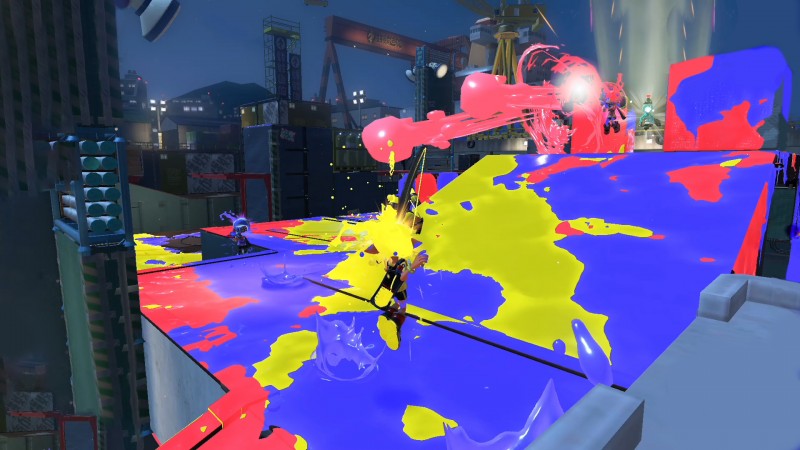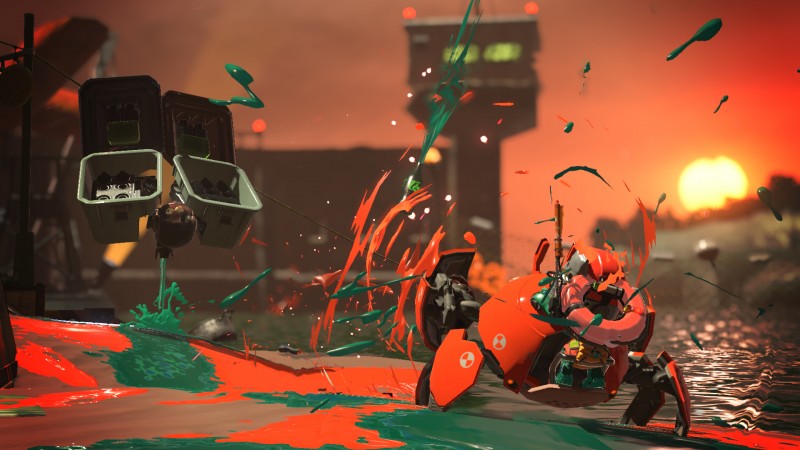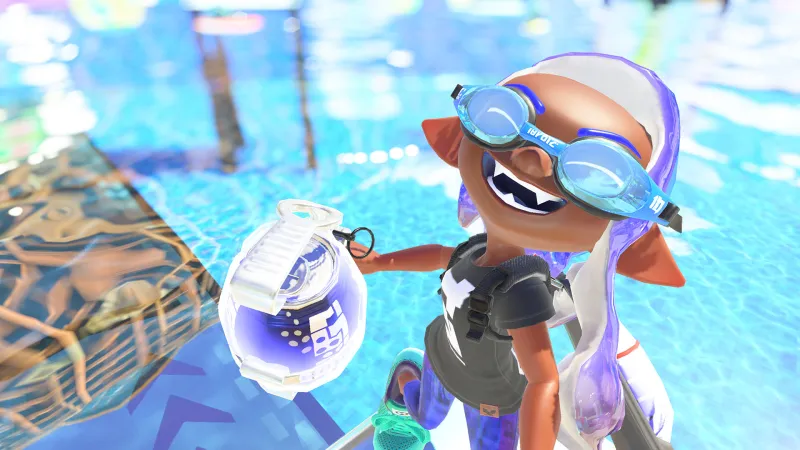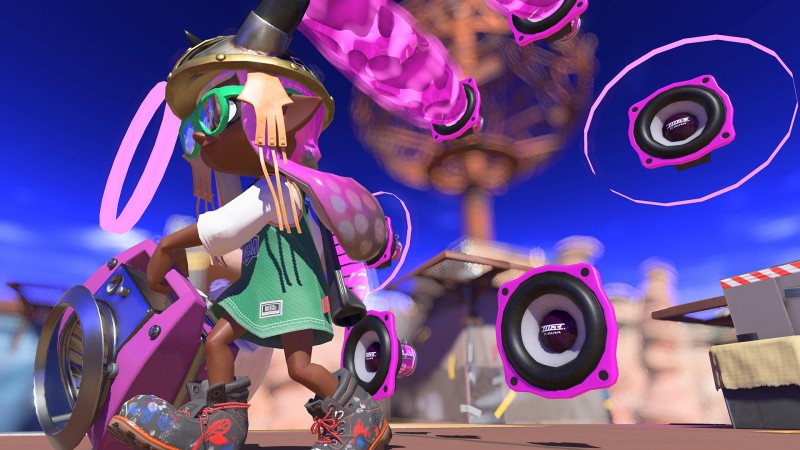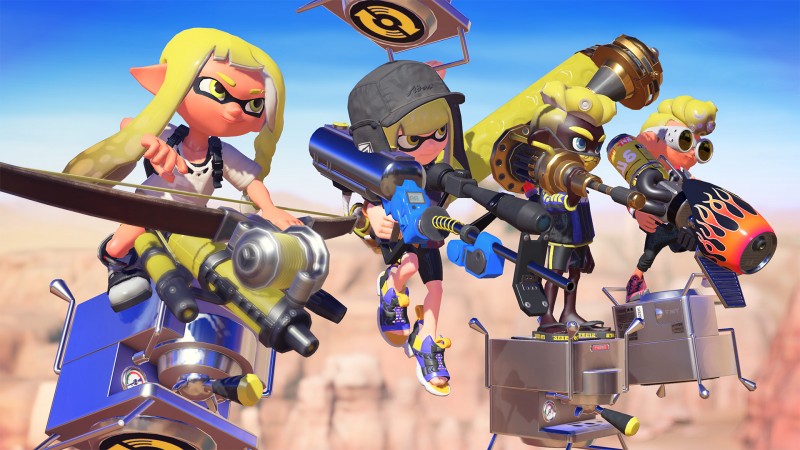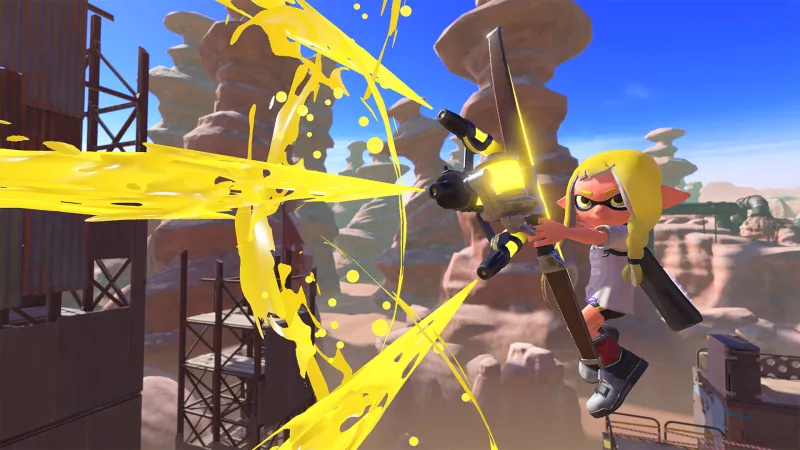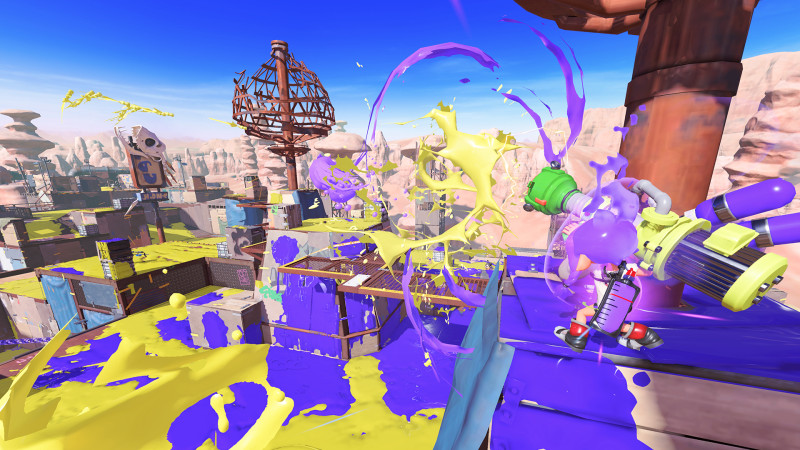
Reviewed on:
Switch
Developer:
Microsoft
Since its debut in 2015, the Splatoon series has delivered unique, colorful gameplay cribbed by scarce launch content and disappointing time restrictions for specific modes. While post-launch content greatly bolstered both games to this point, I’ve always been disappointed by how little was initially on offer. Now on its third entry, the series may feel a bit less fresh, but Splatoon 3 remedies the series’ long-standing launch content woes while retaining all the fun that made the series such a success.
Stepping back into the stylish shoes of your custom Inkling feels great; splattering your brightly colored ink looks, feels, and sounds satisfyingly messy, particularly when you’re splatting an enemy. Few games match the smooth, intuitive mobility Splatoon gives you while submerged and cruising through a map. While Splatoon 3 provides more modes than ever, those core gameplay tenets carry over regardless of which one you play.
Splatoon’s competitive multiplayer, where two opposing teams battle to cover the map (and each other) with their color ink, is the destination for most, and that is where the added content feels most impactful. While maps unfortunately still operate on a timed rotation, the pool from which they are pulled is much deeper than previous launches; the 12 Turf War maps, consisting of both old and new stages, nearly match the launch total of the first two games combined.
Splatoon 3 also carries forward the weapons from past games while introducing fun arsenal additions like a useful multi-target bow with rounds that explode when fully charged and the Splatana, which makes you feel like an ink-slinging ninja. Meanwhile, Splatoon 3 gives high-skill players new tools in the form of Squid Surge, a new wall-climbing burst, and Squid Roll, a shielded jump that lets you turn on a dime while swimming. Squid Surge is less valuable unless you’re climbing a tall wall, but Squid Roll, with its ability to chain together multiple moves in rapid succession, can alter the outcome of nearly any encounter if used effectively.
Much like previous games, the frantic pace of these three-minute matches makes them ideal for bite-sized gaming sessions while also appealing to those who fall into a “just one more match” mindset. The final minute, where the music ramps up and everyone tries to cover as much ground as possible (literally), remains an adrenaline rush in the race to splash more ink than the opposing team. That rush amplifies in the revamped Splatfests, which now include three distinct teams. Most of the experience remains unchanged, but the new Tricolor Turf Wars, where the four-player first-place team must defend the center position against two squads of two, shake things up. These intense matches require new strategies for everyone involved since the groups converge from opposite sides of the map.
While the series is rightfully known for its competitive multiplayer, the other two main modes are also worthwhile components. Splatoon 3’s Salmon Run evolves the exciting wave-based cooperative PvE multiplayer experience by adding more bosses (all of whom require unique strategies to defeat) and the ability to throw the eggs you retrieve from them into the goal basket. Working together to defeat minions and retrieve enough eggs from fallen bosses to progress to the next round never ceases to excite. However, the biggest boon to this mode is that the arbitrary time restrictions from Splatoon 2 are gone in favor of the mode receiving the same 24/7 availability of the other pillars.
This iteration also continues the series’ tradition of providing enjoyable single-player missions that take advantage of the various mechanics of the franchise. Splatoon 3’s single-player Hero mode is a great way to familiarize yourself with the game’s controls, strategies, and weapons, but it’s far more than a glamorized tutorial. The story is inconsequential, but thanks to various gimmicks introduced at a rapid clip and puzzles involving your new companion, Smallfry, Hero mode’s levels present largely satisfying explorations of how the developers can stretch the core gameplay in surprising and exciting ways.
I loved missions like one where I grinded on rails while participating in a fast-paced shooting gallery or another where I navigated through an enemy-filled maze with a big twist at the end. While I loved almost all the time I spent in Hero Mode, there are a few misses, with some missions serving up more frustration than fun, and others veer too close to missions I played in Splatoon 2. The boss battles, which were among my favorite parts of past games, serve up a mixed bag, though they’re mostly disappointing. The ones that do hit, though, are among the best the series has ever presented.
Splatoon 3 doesn’t reinvent the wheel, nor does it need to. Instead, it improves nearly every franchise element in sometimes small but meaningful ways. With an already-robust set of content available at launch and at least two years of free and premium content on the horizon, Splatoon 3 is simultaneously the series’ best entry to date and its most promising.
Score:
8.5
About Game Informer’s review system
Source: Game Informer Splatoon 3 Review – Multicolored Mayhem


